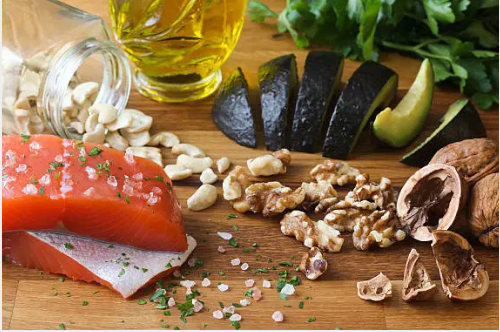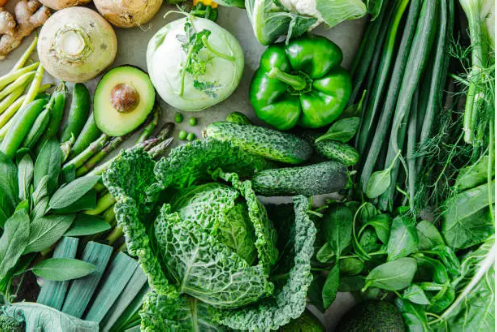
Understanding the Silent Threat of Chronic Inflammation
Many individuals experience persistent fatigue, unexplained aches, digestive discomfort, or a general sense of feeling unwell. These subtle, often overlooked symptoms could be indicators of a deeper, underlying process known as inflammation. While inflammation is a natural and essential part of the body’s healing mechanism, its chronic form can pose a significant threat to overall health.
Acute inflammation represents the body’s immediate and beneficial response to injury or infection. It is a short-lived process, like the swelling that occurs after a sprained ankle, designed to initiate healing and remove harmful stimuli.1 This protective response is crucial for recovery. However, when this immune response becomes prolonged, lasting for several months to years, it transitions into chronic inflammation.1 Unlike its acute counterpart, chronic inflammation persists even without an apparent injury or when the initial cause, such as a persistent infection or exposure to toxic substances, is not eliminated.1
Over time, this sustained inflammatory state can inflict considerable damage on tissues and organs throughout the body.1 This widespread and often silent process is a foundational factor contributing to a broad spectrum of serious chronic diseases. For instance, it plays a role in the buildup of plaque in arteries, significantly increasing the risk of heart disease and stroke.2 Chronic inflammation is also associated with a higher risk of various cancers, as it can cause DNA damage and promote aberrant cell growth, with examples including the link between chronic inflammatory bowel disease and colon cancer.1 Furthermore, it is implicated in the development and progression of diabetes.1 In autoimmune diseases like rheumatoid arthritis and systemic lupus erythematosus, the immune system mistakenly attacks healthy tissues, leading to ongoing chronic inflammation that damages organs.1 The connection extends even to neurodegenerative conditions such as Alzheimer’s disease.7 The pervasive nature of chronic inflammation means that addressing it is not merely about alleviating symptoms, but about proactively preventing a cascade of interconnected health issues that significantly impact quality of life and life expectancy.1
The non-specific symptoms commonly associated with chronic inflammation can include body pain, joint and muscle aches, chronic fatigue, insomnia, depression, anxiety, mood disorders, gastrointestinal complications like constipation, diarrhea, and acid reflux, as well as weight gain or loss, and frequent infections.1 These varied manifestations make it easy for chronic inflammation to go unnoticed or be misattributed, making it a hidden threat that many individuals may unknowingly experience.
While various factors contribute to chronic inflammation, including persistent infections, exposure to irritants, autoimmune disorders, genetics, age, obesity, and smoking 1, dietary choices stand out as a particularly significant and modifiable factor. Foods rich in saturated fat, trans-fats, or refined sugar are associated with a higher production of pro-inflammatory molecules.2 Conversely, a diet abundant in fruits, vegetables, whole grains, and healthy fats helps the body combat oxidative stress, a key trigger for inflammation, and actively reduces inflammatory responses.2 This direct cause-and-effect relationship between what is consumed and the body’s inflammatory state empowers individuals, offering a powerful and accessible lever for improving health and preventing disease. Understanding this connection is a vital step in taking control of one’s well-being.
Fuelling Your Body: The Top 5 Anti-Inflammatory Foods

It is important to remember that no single food can make a diet entirely anti-inflammatory. The cumulative effect of a variety of nutrient-dense foods consumed consistently is what truly makes a difference.2 Integrating a diverse range of fresh, simple ingredients into daily meals is the most effective strategy, as over-processing can significantly alter the nutritional content of foods.2
1. The Berry Powerhouse: Small Fruits, Big Benefits

Berries are celebrated for their vibrant colors and exceptional health benefits, particularly their potent anti-inflammatory properties. They are rich in a diverse array of bioactive compounds, predominantly polyphenols and anthocyanins, which are responsible for their vivid red, purple, and blue pigments.10 These compounds act as powerful
antioxidants, diligently protecting cells from damage caused by unstable molecules called free radicals, which are known to trigger inflammatory processes.10
Beyond their antioxidant capacity, berries actively interfere with fundamental inflammatory signaling pathways. For example, they have been shown to reduce NF-κB signaling, a master regulator of the inflammatory response within cells.10 This means that berries do not just mitigate the damage caused by inflammation; they directly help to prevent or reduce the inflammatory response at a molecular level, offering a more profound and proactive anti-inflammatory effect. The varied proportions of phytonutrients across different berry types underscore the importance of consuming a wide array of berries to gain a broader spectrum of beneficial compounds.10
The benefits of berries extend far beyond inflammation control. They contribute significantly to heart health by preventing issues with platelet formation, improving blood pressure, and reducing cholesterol levels.11 Their compounds also support
brain function and memory, potentially reducing the risk of neurodegenerative diseases like Alzheimer’s and Parkinson’s.12 Berries may also play a role in managing
blood sugar and improving insulin sensitivity, which is beneficial for individuals with diabetes or those at risk of metabolic syndrome.11 Furthermore, research indicates their promise in
cancer prevention by promoting the natural process of cell death for damaged or cancerous cells and inhibiting tumor growth.11 For athletes or those engaging in strenuous physical activity, berries can even aid in
muscle recovery by reducing oxidative stress that contributes to soreness and fatigue.13
To incorporate more berries into a daily diet, enjoy them fresh or frozen, add them to smoothies, oatmeal, yogurt, or toss them into salads. Aim for a “rainbow” of berries, including blueberries, strawberries, raspberries, blackberries, and cranberries, to maximize the intake of diverse beneficial compounds.2
2. Omega-3 Rich Fatty Fish: Your Heart’s Best Friend

Fatty fish are nutritional powerhouses, particularly renowned for their high content of long-chain omega-3 fatty acids: eicosapentaenoic acid (EPA) and docosahexaenoic acid (DHA).8 These essential fats are crucial for health, as the body cannot produce them on its own.17
The anti-inflammatory prowess of omega-3s stems from their unique ability to modulate cellular processes. They work by substituting pro-inflammatory compounds, such as arachidonic acid, in various biochemical pathways, leading to the production of less potent inflammatory mediators.15 More profoundly, EPA and DHA are precursors to
Specialized Pro-resolving Mediators (SPMs), including resolvins, protectins, and maresins.15 These SPMs act as crucial “stop signals” for inflammation, actively resolving the inflammatory process and promoting tissue repair, rather than merely suppressing symptoms.15 This active resolution of inflammation represents a deeper, more fundamental physiological benefit for long-term health. Omega-3s also suppress the production of pro-inflammatory cytokines while promoting the release of anti-inflammatory ones.15
The benefits of omega-3s extend broadly across body systems. They are exceptional for heart health, helping to slightly lower blood pressure, reduce triglyceride levels, and decrease the risk of irregular heartbeats.8 DHA is also vital for
brain function, with consistent intake potentially reducing the risk of cognitive decline and neurodegenerative diseases like Alzheimer’s.17 Furthermore, omega-3s have shown promise in managing chronic inflammatory conditions such as rheumatoid arthritis, inflammatory bowel disease (IBD), and asthma.16
The American Heart Association recommends consuming at least two 3-ounce servings of fatty fish per week to reap these benefits.8 Excellent sources include salmon, sardines, Atlantic mackerel, herring, lake trout, cod, and canned light tuna.8 It is important to note that while omega-3 supplements are available, consuming whole fish is generally preferred due to its broader nutrient profile, including protein, vitamins, and minerals.8 A significant proportion of the population does not receive adequate amounts of omega-3 fatty acids through diet.17 For anti-inflammatory actions, an intake greater than 2 grams per day of EPA plus DHA appears to be necessary.16 This indicates that a conscious effort to meet specific intake levels is often required to achieve the full therapeutic anti-inflammatory effects.
3. Leafy Green Powerhouses: Everyday Essentials for Wellness

Leafy green vegetables are cornerstones of a healthy diet, brimming with essential nutrients that actively combat inflammation. They are packed with vitamins (A, C, K), minerals (magnesium, potassium, selenium), fiber, and a wide array of antioxidants such as beta-carotene, lutein, flavonoids, and various phenolic compounds.14 These nutrients work synergistically to neutralize cell-damaging free radicals and reduce inflammation throughout the body.14
Beyond general antioxidant effects, specific compounds found in various leafy greens offer unique anti-inflammatory benefits. For instance, broccoli is notable for its production of sulforaphane, parsley for apigenin, and cruciferous vegetables like cabbage, Brussels sprouts, and turnip greens for glucosinolates.14 These compounds not only possess potent anti-inflammatory effects but may also support blood sugar management, blood pressure regulation, and cognitive health.14 The presence of these distinct compounds across different greens highlights the importance of incorporating a wide variety into the diet to gain a comprehensive spectrum of beneficial phytochemicals.
The extensive benefits of leafy greens extend beyond inflammation. Their fiber content supports digestive health, while their rich nutrient profile boosts immune system function.14 Vitamin K, abundant in many greens, is crucial for
bone health.19 Regular consumption of leafy greens may also help reduce the risk of obesity, heart disease, high blood pressure, and mental decline.19
There are many creative ways to integrate more greens into daily meals. Consider a variety of options such as spinach, kale, arugula, Swiss chard, collard greens, cabbage, beet greens, broccoli, carrots, peppers, bok choy, endive, parsley, and garlic.2 They can be added to smoothies, salads, stir-fries, soups, or served as a vibrant side dish. Experimenting with different cooking methods, from raw to lightly steamed or sautéed, can help diversify intake.18 It is also worth noting that while some historical rumors suggest nightshade vegetables like tomatoes and eggplant cause inflammation, scientific meta-analyses have not supported this claim. In fact, these vegetables contain potent antioxidants and are valuable additions to an anti-inflammatory diet.18 Dispelling such dietary myths helps to broaden the acceptance and consumption of beneficial foods.
4. Golden Turmeric: The Ancient Spice with Modern Science

Turmeric, often referred to as “golden spice,” has been a staple in traditional Indian Ayurvedic medicine for centuries, prized for its vibrant color and profound medicinal properties.20 The key active compound responsible for its powerful anti-inflammatory effects is
curcumin, a polyphenolic compound.20
Curcumin exerts its anti-inflammatory actions by modulating numerous molecular targets within the body.21 It notably inhibits the
NF-κB pathway, a central regulator that turns on inflammatory genes, as well as other pro-inflammatory pathways such as mitogen-activated protein kinase (MAPK) and Janus kinase (JAK)/Signal transducer and activator of transcription (STAT).21 Furthermore, curcumin reduces the production of inflammatory mediators like cytokines (e.g., TNF-α, IL-1β) and enzymes such as cyclooxygenase (COX) and lipoxygenase (LOX), which are directly involved in pain and inflammatory processes.21 Beyond its anti-inflammatory capabilities, curcumin is also a strong antioxidant, effectively combating oxidative stress that contributes to cellular damage.20 This multi-targeted approach to inflammation highlights curcumin as a potent agent that addresses inflammatory processes from various angles.
Despite its impressive benefits, a significant challenge with curcumin is its poor absorption and rapid metabolism when consumed orally.20 This means that simply adding turmeric powder to food might not deliver a therapeutically effective amount of curcumin to the body. To overcome this, it is crucial to enhance its bioavailability. This can be achieved by consuming turmeric with
black pepper, which contains piperine, a compound known to significantly improve curcumin absorption. Additionally, consuming turmeric with a source of healthy fats can further aid in its uptake.
Turmeric can be easily incorporated into daily culinary practices. It lends a warm, earthy flavor to curries, soups, and stews. It can also be added to roasted vegetables or used to make a comforting “golden milk” latte. By understanding and addressing the absorption challenge, individuals can more effectively harness the ancient wisdom and modern scientific backing of this remarkable spice.
5. Extra Virgin Olive Oil: The Mediterranean Secret

Extra Virgin Olive Oil (EVOO) is a cornerstone of the health-promoting Mediterranean diet, lauded for its numerous health benefits. While its healthy monounsaturated fats contribute to its nutritional value, the primary drivers of its anti-inflammatory and broader health effects are its rich content of polyphenols.22 These include compounds like
hydroxytyrosol and tyrosol, as well as oleocanthal and oleuropein.22
These polyphenols are powerful antioxidant and anti-inflammatory compounds.22 They exert their beneficial effects by modulating crucial cellular signaling pathways. For instance, they activate
Nrf-2 signaling, which triggers a cellular defense response, and they prevent the activation of NF-κB, thereby suppressing a pro-inflammatory state within the body.22 This specific mechanism of action demonstrates how EVOO’s components actively regulate the body’s inflammatory machinery. The consistent mention of EVOO as a key component of the Mediterranean diet reinforces that its benefits are part of a larger, well-researched healthy eating pattern, advocating for a holistic dietary approach rather than isolated food consumption.23
Regular consumption of EVOO is associated with a reduced risk of various chronic degenerative disorders, including cardiovascular diseases, type 2 diabetes, and certain cancers.23 It has also shown promise in improving symptoms in immune-mediated inflammatory diseases.23
To maximize the culinary and health benefits, it is important to choose high-quality extra virgin olive oil, which retains the highest concentration of beneficial polyphenols. EVOO is best used for salad dressings, dipping bread, drizzling over cooked dishes, or as a healthier alternative to less beneficial fats in sauces.24 For cooking, it is generally recommended for low-heat applications or as a finishing oil to preserve its delicate compounds and maximize its health-promoting properties.
Key Table: Your Anti-Inflammatory Food Power-Up Guide
This table provides a concise summary of the top anti-inflammatory foods, their key compounds, core benefits, and practical tips for maximizing their impact on health.
| Food | Key Anti-Inflammatory Compounds | Core Anti-Inflammatory Benefit | How to Maximize Benefit |
| Berries | Anthocyanins, Polyphenols, Flavonoids | Potent antioxidants; reduce oxidative stress & inhibit inflammatory pathways (NF-κB). | Eat a variety of colors; fresh or frozen. |
| Fatty Fish | Omega-3s (EPA, DHA), SPMs (Resolvins, Protectins) | Actively resolve inflammation; reduce inflammatory mediators; support heart & brain. | Consume 2+ servings/week (salmon, sardines, mackerel). |
| Leafy Greens | Vitamins (A, C, K), Minerals, Antioxidants, Sulforaphane, Glucosinolates | Fight free radicals; support immune & digestive health; inhibit inflammatory pathways. | Include a wide variety daily (kale, spinach, broccoli, cabbage). |
| Turmeric | Curcumin | Inhibits multiple inflammatory pathways (NF-κB, COX, LOX); strong antioxidant. | Combine with black pepper and healthy fats for absorption. |
| Extra Virgin Olive Oil | Polyphenols (Hydroxytyrosol, Tyrosol) | Modulate cellular signaling; activate defense responses; prevent NF-κB activation. | Use high-quality EVOO for dressings, finishing, low-heat cooking. |
Beyond the Plate: A Holistic Approach to Reducing Inflammation
While diet is a cornerstone in the fight against chronic inflammation, it is crucial to recognize that it is part of a broader, synergistic approach to health. Other critical lifestyle components work in conjunction with dietary choices to effectively combat inflammation and promote overall well-being. The combined effect of these healthy habits can yield significantly greater anti-inflammatory benefits than focusing on diet alone, shifting the perspective from isolated interventions to a comprehensive wellness strategy.
Regular Physical Activity: Engaging in consistent physical activity has profound anti-inflammatory effects by regulating the immune system.9 Exercise can help modulate white blood cells and chemical messengers called cytokines, which are involved in inflammatory responses.
Maintaining a Healthy Weight: Excess body fat, particularly visceral fat, is known to stimulate body-wide inflammation by secreting pro-inflammatory molecules.4 Avoiding excess weight is therefore an important strategy to prevent fat-related inflammation and reduce the risk of conditions like type 2 diabetes, which itself causes chronic inflammation.9
Stress Management: Chronic stress can trigger the repeated release of stress hormones, which contribute to chronic inflammation.9 Incorporating stress-reducing practices such as yoga, deep breathing exercises, and mindfulness can help calm the nervous system and mitigate this inflammatory pathway.
Adequate Sleep: While not explicitly detailed in the provided materials, sufficient and restorative sleep is a fundamental pillar of health that supports the body’s repair processes and immune function, indirectly contributing to inflammation management.
Avoiding Smoking: Toxins inhaled from cigarette smoke directly trigger inflammation in the airways, damage lung tissue, and increase the risk of various health problems, including cancer.4 Eliminating smoking is a critical step in reducing systemic inflammation.
Preventing Infections: Certain infections, if persistent, can lead to chronic inflammation. Taking measures to avoid such infections, including practicing safer hygiene and getting routine vaccinations, can help reduce the burden of inflammation in the body.9
By integrating these lifestyle factors with a diet rich in anti-inflammatory foods, individuals can create a powerful, multi-faceted defense against chronic inflammation, fostering long-term health and vitality.
Conclusion: Empower Your Health, One Bite at a Time
Chronic inflammation, often subtle in its onset, poses a significant threat to long-term health, acting as a foundational contributor to a wide array of serious conditions including heart disease, cancer, diabetes, and neurodegenerative disorders. The profound impact of this pervasive process underscores the importance of proactive health strategies.
The evidence overwhelmingly demonstrates that dietary choices are a powerful, modifiable tool in managing and preventing chronic inflammation. By consistently incorporating foods rich in specific bioactive compounds, individuals can actively influence their body’s inflammatory state. The five foods highlighted—berries, omega-3 rich fatty fish, leafy green vegetables, turmeric, and extra virgin olive oil—offer distinct yet complementary mechanisms to combat inflammation, from potent antioxidant action and direct inhibition of inflammatory pathways to active resolution of the inflammatory response. The effectiveness of these foods is maximized when practical considerations, such as the bioavailability of curcumin or the variety of phytonutrients in greens, are taken into account.
Ultimately, empowering health is about making informed choices and understanding their cumulative impact. By focusing on consistent, small dietary changes and integrating them with other healthy lifestyle habits, individuals can build a robust defense against chronic inflammation, fostering greater well-being and resilience.
This is for informational purposes only. For medical advice or a diagnosis, please consult a professional.
For further reading and resources on enhancing your health and wellness journey, explore more articles at:

